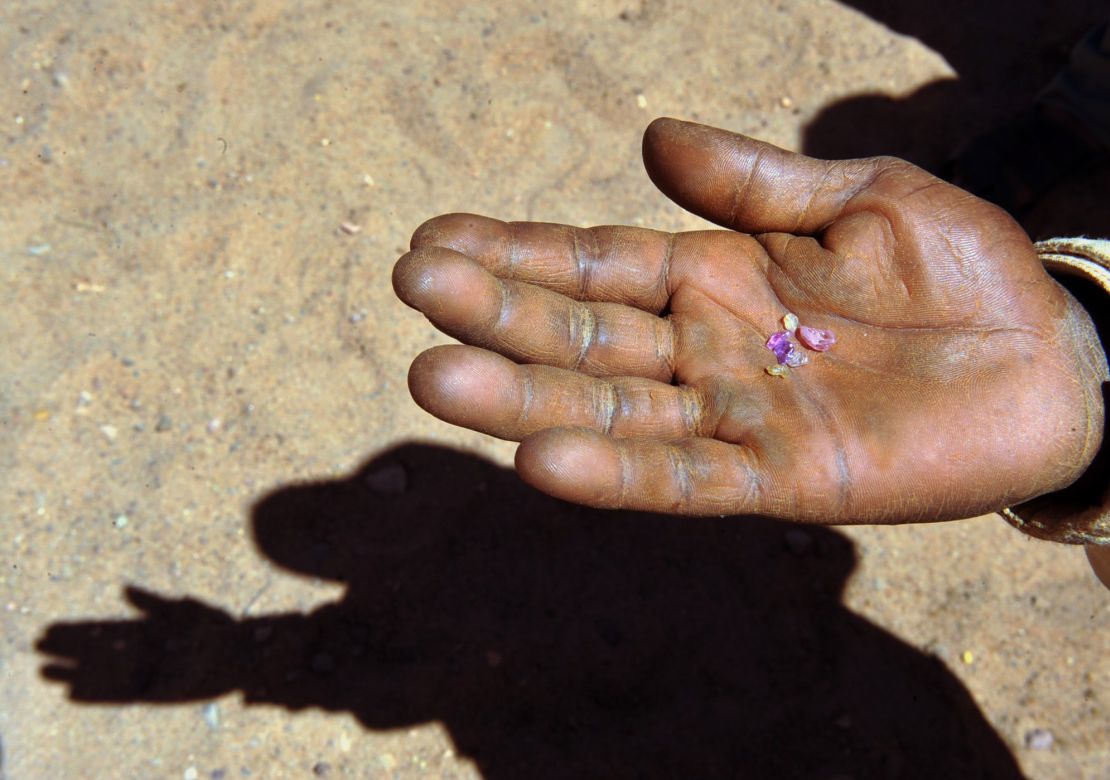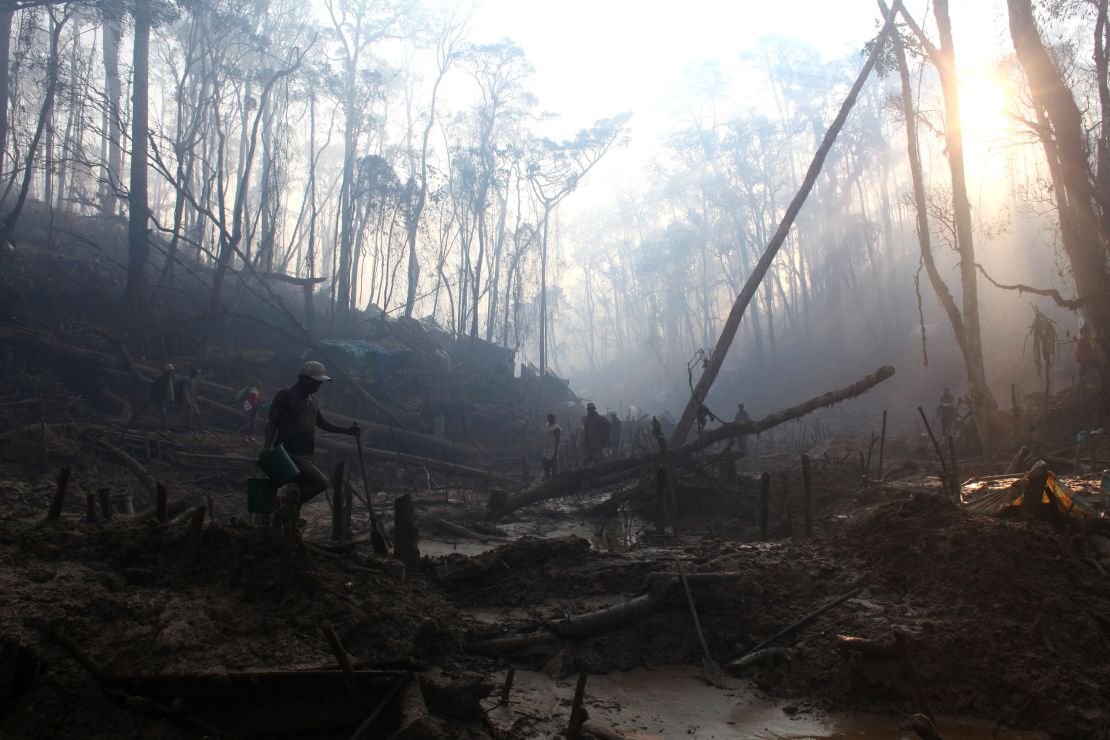Story highlights
Madagascar is a major producer of sapphires
New rush producing 50 carat stones, compared to world's finest
Conservationists fear destruction of rainforest
They are adored by royalty and movie stars – but sapphires could spell trouble for some of the planet’s rarest creatures.
Madagascar has become one of Africa’s leading producers of the colored gems since they were first discovered on the island in the 1990s, exporting $16.5 million of sapphires, rubies and emeralds in 2015, according to MIT’s trade database. This does not include a sizeable black market.
The northern Corridor Ankeniheny-Zahamena is now seeing a major new sapphire rush, delivering much-needed income for miners in a country where over 70% of the population earn less than $1.90 a day, according to the World Bank. But conservationists claim this windfall comes at a cost.

New peak
A new study from the Gemological Institute of America estimates that “approximately 50,000 unlicensed small scale miners” have flooded into the site since the first sapphires were discovered in October 2016. Teachers and farmers have reportedly abandoned their jobs to seek fortunes in the mines.
Gemologist Vincent Pardieu, one of the report’s authors, says the density of quality sapphires represents a new peak for the industry in Madagascar, out-performing the previous sapphire heartland, Ilakaka.
“There have been more than 100 fine stones over 50 carats in the past six months,” he says. “This is probably more than in Ilakaka in the last 20 years.”
Fellow gemologist Rosey Perkins, who visited the site in October, says a range of blue and green sapphires are being discovered. Some stone are of such high quality that labs have mistaken them for Kashmiri sapphires, regarded as the best in the world, she says.

Protective measures
A problem with the current rush is that it takes place within a protected area, home to uniquely rich wildlife.
The area is monitored and maintained by environmental group Conservation International, which is concerned about the effects of the sapphire rush and has appealed to the government to protect it with more rigorous policing.
“The illegal mining is bringing deforestation and destruction to this area, which is renowned for its biodiversity,” says Michael O’Brien-Onyeka Senior Vice President of the Africa Field Division at Conservation International.
“Much like other illegal activity elsewhere in the world, such as poaching of wildlife, this mining does not benefit the people Madagascar. They are only left with the destruction and depletion of the natural resources.”
The Ankeniheny-Zahamena Corridor is home to thousands of plant and animal species unique to the region, according to the group, including the largest known species of lemur – the Indri - as well as many rare birds and amphibians.

Mutual benefit?
There have been reports of wide-scale destruction of the rainforest, but Pardieu disputes this.
“I thought I would arrive in a place that had been devastated, but actually I was surprised to see that it was not the case,” he says.
Areas of the forest have been cleared by farmers for agriculture using “slash and burn” techniques, the gemologist says. But the miners themselves were using small-scale artisanal prospecting techniques that are far less destructive than industrial or chemical processes.
Pardieu adds that the specific site of the rush is likely to be exhausted soon. But a new seam will eventually be discovered in the wider area, and this too will attract miners seeking an escape from poverty.
In the longer term, he believes it would be desirable to forge a mutually beneficial understanding between the miners and conservationists.
“In Mozambique, the Niassa Lion Project is supported by ruby mining near the Niassa National Reserve,” he says.
“I would love to see the gemstone world support the living world here.”









